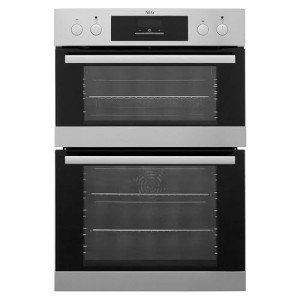The Rise of Built-In Ovens: A Seamless Approach to Modern Cooking
In contemporary kitchen areas, where style looks blend effortlessly with performance, one appliance stands apart as a true game changer: the built-in oven. As click the up coming article and chefs alike continue to seek innovative solutions that enhance their cooking experience, built-in ovens have actually become increasingly popular. This short article explores the advantages, factors to consider, and patterns surrounding built-in ovens, highlighting why they are an important function in contemporary cooking areas.
What is a Built-In Oven?
A built-in oven is a cooking area device developed to be integrated into the cabinetry of a kitchen instead of standing alone. Unlike traditional freestanding ovens, which can be moved and placed anywhere, built-in ovens been available in different styles and sizes to fit specifically within designated spaces. Readily available in single or double setups, these ovens use a structured appearance that matches modern-day cooking area styles.

Advantages of Built-In Ovens
1. Space-Saving Design
One of the most attractive advantages of built-in ovens is their space-saving design. By incorporating the oven into kitchen cabinetry, you can maximize valuable counter and flooring space. This is especially useful in smaller kitchens, where taking full advantage of space is important. Built-in ovens can be installed at eye level, making them more available and lowering the need to bend down.
2. Aesthetic Appeal
Built-in ovens add to a smooth and cohesive kitchen design. Offered in different finishes-- such as stainless steel, black, white, and custom-made cabinets-- they can mix flawlessly into the general decoration. This aesthetic appeal improves the kitchen area's visual harmony and raises the space, developing a modern and sophisticated atmosphere.
3. Boosted Functionality
Many built-in ovens come geared up with advanced cooking technologies, such as convection cooking, steam ovens, and smart functions. These improvements enable versatile cooking options, making it easier to attain professional-level results in the house. Smart built-in ovens can even connect to Wi-Fi, allowing users to control the oven remotely, receive alerts, and gain access to a variety of cooking programs and dishes.
4. Enhanced Ventilation
Since built-in ovens can be integrated with cooking area hoods and ventilation systems, they can help maintain better air quality and minimize cooking odors. This is specifically considerable for those who like to prepare with fragrant spices and active ingredients, as a reliable ventilation system can keep the kitchen comfortable and inviting.
5. Customization Options
Built-in ovens use a wide variety of personalization alternatives to fit private cooking designs and needs. From professional-grade home appliances with multiple cooking modes to compact styles for smaller sized kitchen areas, homeowners can select the oven that fits their particular requirements. Numerous makers also use customizable front panels, allowing you to match the oven's look to your cabinets for a really combined look.
Considerations When Choosing a Built-In Oven
While built-in ovens have many benefits, there are essential factors to consider to remember before purchasing:
1. Rate
Built-in ovens normally come with a greater cost than their freestanding equivalents due to their style and setup requirements. It's important to factor in both the cost of the oven and any additional expenditures connected to cabinets adjustments or installation.
2. Setup Requirements
Installing a built-in oven often requires expert help, especially if you need to customize existing cabinets. Guarantee that you think about any expenses connected with installation, consisting of labor and possible cabinets adjustments.
3. Size and Dimensions
Before acquiring a built-in oven, determine the designated area accurately to ensure a proper fit. Built-in ovens can be found in various sizes and configurations, so picking one that lines up with your needs and cooking area design is important.
4. Lifestyle and Usage
Consider your cooking habits and needs when choosing a built-in oven. If you often host big gatherings, a double oven may be more helpful. On the other hand, if you have a compact cooking area, a single-wall oven might be sufficient.
Patterns in Built-In Ovens
The kitchen area home appliance market is continuously developing, and built-in ovens are not exempt from emerging patterns. Some present patterns consist of:
Smart Technology Integration: With the rise of clever home innovation, built-in ovens now often feature connection alternatives. This allows users to keep an eye on cooking progress and adjust settings via mobile apps.
Energy Efficiency: As sustainability becomes a priority, lots of manufacturers are purchasing energy-efficient built-in ovens that lower energy usage while preserving efficiency.
Multi-functional Designs: Built-in ovens now provide features such as air frying, slow cooking, and steaming, offering versatility that meets a vast array of cooking approaches.
Conclusion
Built-in ovens certainly represent a best blend of style, function, and convenience in today's cooking areas. As more house owners decide for this modern-day solution, the focus shifts to creating a cooking space that is as visually pleasing as it is practical. Whether you are constructing a brand-new home or remodeling your kitchen, considering a built-in oven could elevate your culinary experience and change your kitchen into an elegant and functional sanctuary. With a variety of choices readily available and ongoing innovations in technology, built-in ovens stay a standout choice for both newbie cooks and culinary enthusiasts alike.
